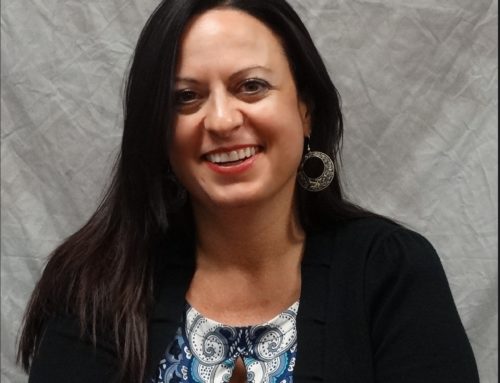Transformation is happening all around us all the time. It is no news to anyone that we are experiencing massive economic, scientific, technological, political, social and cultural changes that together conspire to take us far beyond business as usual. Our institutions and conventions are under intense scrutiny from all directions. People are looking at our world and their own situations quite differently from how they did even 20 years ago. Indeed, we are living through several earth-shaking shifts that are rewriting our story of who we are in the world. The speed and manner in which this is happening make it more clearly visible to some people and less obvious to others. However, not being aware of it does not mean that it is not happening. When a hurricane flattens a forest, it makes a sound—even if no one is there to hear it.
“We are living in a critical, violent moment of history; an entire world is crashing down, another has not yet been born. Our epoch is not a moment of equilibrium in which refinement, reconciliation, peace, and love might be fruitful virtues.” Nikos Kazantzakis, 1923, translated 1960.
Top methods and, indeed the whole field of group facilitation were born out of a concern for new ways of responding to change happening in our world, and really I mean change happening in the collective impact (our social process) of our species on one another and, now on other species and conditions on our planet as a whole. So, you have three things:
Some clients already know the type of impact they want from the planning, while others may have only a vague impression of what the result might be. The ToP practitioner can design the following outcomes or impacts on the organization. These impacts are arranged in order of difficulty.
1. Enhancing or changing current operating structures The plan might lead to a shift or a new emphasis conducting normal operations. For instance, strategies might emphasize practical training even though some training activities are already in existence. Implementation of these types of strategies may involve a simple reshuffling of some workloads or resources. ToP action planning can be used for the immediate implementation of strategies of this nature. If the implementation team is very small, it can be very helpful to prioritize the strategies first.
2. Creating new initiatives The final plan may call for a brand new focus in a new area that is markedly different from the normal areas of operation. Strategies implemented for this purpose are added to the workload normally carried out within the organization. For instance, a strategy might call for the creation of a new research area or product line. Gearing up for this new focus could require new activities that have never been done before by the organization, and which they currently do not have the capacity to initiate internally.
3. Formalizing organizational structural change The client may need a plan that is significant enough to require some substantial changes in organizational structure and reporting relationships. For example, a strategy could be to gather all the communication functions operating throughout the organization at many levels and in several areas of work into one cohesive area of responsibility.
4. Transforming whole systems Some clients may be looking for a major transition of their entire organization, with a completely new focus and new modes of operation. This need for transformation can happen during organizational mergers, break-ups, or periods of accelerated growth. If this is the case, the strategies call for transition planning, and the organization’s new vision often highlights dramatic changes in mandate.
5. Supporting value-based, behavioral changes Sometimes, rather than shifting what is done, a major shift is needed in how things are done. This occurs, for instance, when a new set of values are to guide all operations of an organization, or when a new accountability framework and new measures are to be embedded throughout the system, or when an the organization decides to operate in an entirely new way.
Any of the five levels of impact above can also require people within the organization to make personal life changes. During periods of personal transition (such as in career, health, or relationships), a person can develop strategies that keep them from making “the same ol’ mistakes.” The behavior changes are more sweeping than changes to specific activities and may require the development of a personal vision and an understanding of the root causes of difficulties in their personal lives. The development of strategies within that context can be very powerful for encouraging sustained changes in life.
ToP PRACTITIONERS DILEMMA
At the time, the landscape was beginning to shift. Founders of the newly forming profession were beginning to consider the very nature of facilitation, and one of its most basic tenets was that of neutrality. As facilitators, ToP practitioners knew they could always play a neutral role with participants, but as agents of transformation there was still the question of whether they could really be neutral. Professional facilitators debate this possibility of being a neutral presence and at the same time being a conscious agent of transformation. A transformational process used by an agent is heavily dependent on the values and philosophy of that agent, but those values and philosophy may not be shared by the client group and participants. Does one knowingly use a transformational process that shifts the client or participants in the direction of one’s own values, or does one try to remain neutral knowing that the client’s values may be the main dysfunction within the group?
This tension exposes the central dilemma of the ToP practitioner. On-the-ground evidence from 35 years of practice by hundreds of master ToP practitioners shows that the methods are indeed transformational—as they were designed to be. Therefore, the ToP practitioner can remain simply a professional facilitator, and use the methods as neutral planning and productivity tools—just as many clients want. On the other hand, the facilitator can admit to a transformational intent, use the methods at their full power … and take the consequences. Typically, the consequence is that the client is happier afterwards. However, if you talk about the potential for transformation beforehand, it can cause a degree of nervousness in clients. As more and more ToP practitioners and certified facilitators become passionate enough about the potential for positive change in society they talk about it with the client in advance. When they don’t mention it, they are in a similar position to a master architect who doesn’t mention his or her qualifications when renovating a neighbor’s garage. Selecting a master ToP practitioner to create a plan to increase productivity is somewhat akin to selecting a Ferrari to drive to the convenience store for milk. A reasonable question for every ToP practitioner is “When do I want to facilitate just what the client wants, and when do I want to ask about transforming their situation?”
hhmmmm . . . .
http://www.amazon.com/




Leave A Comment